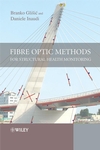
Engineering smart bridges that can thoroughly discuss their health with inspectors is the goal of a new $19-million project led by the University of Michigan.
A year and a half after the I-35 bridge collapse in Minneapolis, the five-year project aims to create the ultimate infrastructure monitoring system and install it on several test bridges whose precise locations are not yet determined.
The monitoring system is envisioned to include several different types of surface and penetrating sensors to detect cracks, corrosion and other signs of weakness. The system would also measure the effects of heavy trucks on bridges, which is currently impossible. And through enhanced antennas and the Internet, the system would wirelessly relay the information it gathers to an inspector on site or in an office miles away.
Funded in large part by nearly $9 million from the National Institute of Standards and Technology's (NIST) Technology Innovation Program (TIP), the project involves 14 U-M researchers with the College of Engineering and the U-M Transportation Research Institute (UMTRI). In addition, engineers at five private firms in New York, California and Michigan are key team members. The remaining funding comes from cost-sharing among the entities involved and the Michigan Department of Transportation. MDOT has offered unfettered access to state bridges to serve as high-visibility test-beds showcasing the project technology.
"This project will accelerate the field of structural health monitoring and ultimately improve the safety of the nation's aging bridges and other infrastructures," said Jerome Lynch, principal investigator on the project and assistant professor in the Department of Civil and Environmental Engineering. "We want to develop new technologies to create a two-way conduit of information between the bridge official and the bridge. We are excited to collaborate on these transformative technologies with partners like MDOT who could use them immediately to improve bridge inspection processes."
Four types of sensors will contribute to gathering data. Victor Li, E. Benjamin Wylie Collegiate Professor of Civil and Environmental engineering, has developed a high-performance, fiber-reinforced, bendable concrete that's more durable than traditional concrete and also conducts electricity. Researchers would measure changes in conductivity, which would signal weaknesses in the bridge. On test bridges, the deck would be replaced with this concrete.
A carbon nanotube-based "sensing skin" that Lynch and a colleague in chemical engineering are developing would be glued or painted on to "hot spots" to detect cracks and corrosion invisible to the human eye. The skin's perimeter is lined with electrodes that run a current over the skin to read what's happening underneath based on changes in the electrical resistance.
Low-power, low-cost wireless nodes could look for classical damage responses like strain and changes in vibration. These nodes would harvest energy from vibrations on the bridge or even radio waves in the air. They are being developed by Dennis Sylvester, an associate professor in the Department of Electrical Engineering and Computer Science; and Khalil Najafi, Schlumberger Professor of Engineering, Arthur F. Thurnau Professor and chair of the Electrical and Computer Engineering division.
The fourth type of sensor would be housed in the vehicles that travel on the bridge. UMTRI researchers will outfit a test vehicle to measure the bridge's reaction to the strain the vehicle imposes. This information is not available today. But how vehicles, especially trucks, affect bridges is a critical piece of information that could help predict the structure's lifetime. Leading this effort is Research Professor Tim Gordon, head of UMTRI's Engineering Research Division.




No comments:
Post a Comment